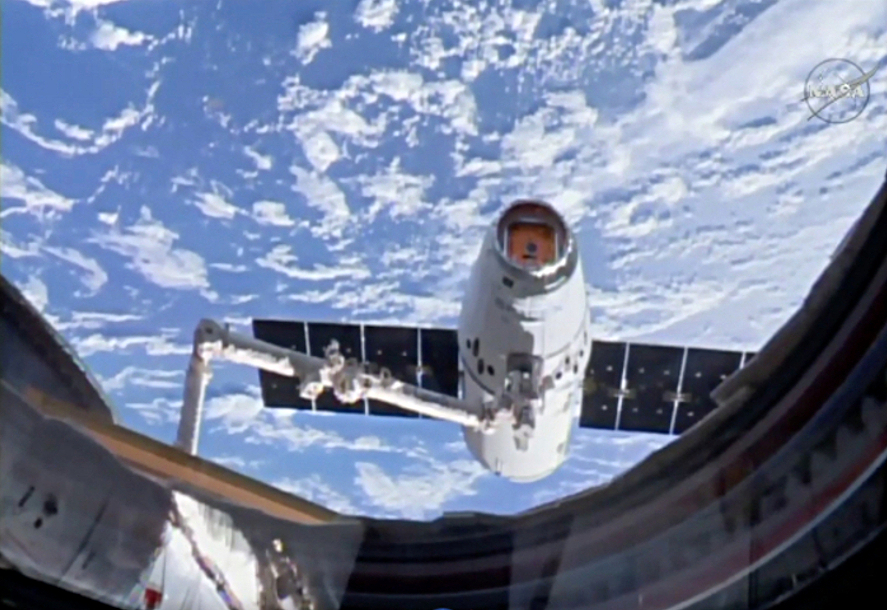
 Credit: NASA; SpaceX
Credit: NASA; SpaceX
Capture the Dragon
On June 3, 17:07 EDT (21:07 UTC), the Commercial Re-Supply Services-11 (CRS-11) mission launched from Pad 39A at the Kennedy Space Center to the International Space Station, propelled by a re-usable SpaceX Falcon 9 rocket. This mission marks the first re-use of a SpaceX Dragon capsule, an important step towards low-cost access to near earth orbit. Most importantly for astrophysicists, the CRS-11 payload includes the Neutron Star Interior Composition Explorer (NICER), a high-precision NASA X-ray timing observatory. NICER is designed to study the interiors of neutron stars by observing their X-ray pulses to determine how the intense gravity produced by a neutron star distorts the spacetime around the star. In addition to its primary mission to study neutron star X-ray pulsars, NICER will also serve as a general purpose observatory to study the time and energy dependence of X-ray emission from black hole binaries, galaxies, gamma-ray bursts, normal stars and other cosmic objects. In addition, NICER is also known by its alias SEXTANT, which stands for Station Explorer for X-ray Timing and Navigation Technology. As SEXTANT, NICER's neutron star pulse timing capability will be used to precisely determine positions in space, a technology that may someday enable deep space navigation. On June 5, the Dragon capsule carrying NICER successfully rendezvoused with the International Space Station and was captured by the Station's robotic arm, shown in the image above. NICER is scheduled to be extracted from the Dragon trunk on June 11, and installed onto the Space Station's ExPRESS Logistics Carrier (ELC) on June 13, beginning its observations of pulsars after a rigorous check-out interval.
Published: June 5, 2017
<
HEA Dictionary ● Archive
● Search HEAPOW
● Other Languages
● HEAPOW on Facebook
● Download all Images
● Education ● HEAD
>

Each week the HEASARC
brings you new, exciting and beautiful images from X-ray and Gamma ray
astronomy. Check back each week and be sure to check out the HEAPOW archive!
Page Author: Dr. Michael F. Corcoran
Last modified Tuesday, 27-Feb-2024 10:13:23 EST


